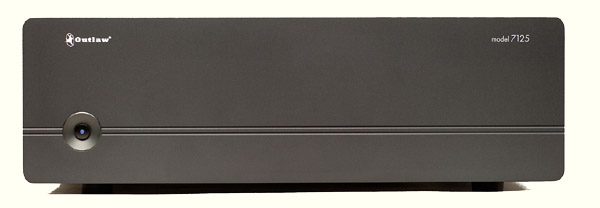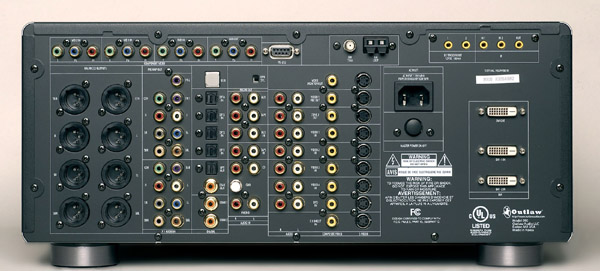|
||||||
|
I like that the 990 fits my painfully modernist design sensibility, and if you squint, you can even convince yourself that the 990 evokes a bit of a Bauhaus aesthetic. However, from a functionality perspective, I wish Outlaw had found a little more use for all of that front panel space, either with more button functionality or possibly a larger display. The 7125 seven-channel power amplifier mirrors the look of the 990 with an austere grey front panel highlighted by a white logo and model designation, along with an attractive power button that has a blue LED to indicate when it is powered on.
Coming around to the rear of the 990, one is met with some of its most outstanding and appealing features. Here, the 990ís generous dimensions are used to great effect, first by including a set of balanced preamp outputs. This is a truly unique feature at this price point, being generally reserved for components that are significantly more expensive. The primary advantage of balanced audio connections is that they have lower noise and distortion than single-ended connectors and thus will provide a cleaner connection between your processor and your amplifier. In addition, there is also a set of single-ended preamp outputs that quite interestingly includes dual mono subwoofer outputs.
Audio is well served, with four optical digital inputs, two coaxial digital
inputs, and a 7.1 multi-channel input. There is also a block of five stereo
analog audio inputs. Rounding things out are the FM and AM antenna jacks
for the tuner, the phono input, and the USB jack. I really like the addition
of the USB connection, as it provides a better quality audio option for the many
computers that donít have other digital audio output options.
The rest of the 990 connections are used for more advanced control and
multi-zone operations. These include an analog audio and video (S-Video and
composite), Zone 2 output, an RS-232 port for control, two 12V triggers, and IR repeater inputs and outputs.
|
||||||






